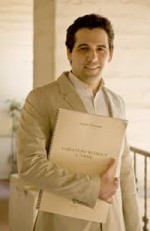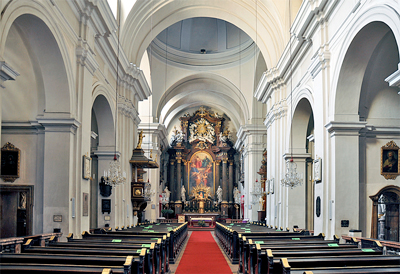by Daniel Hathaway

The work Dorman was referring to in a recent telephone conversation is Franz Schubert’s Mass in E-flat, written in 1828, the last summer of the composer’s life, on commission from the choirmaster of the Alserkirche in Alsergrund, a suburb just north of Vienna’s Innere Stadt. That church was the venue for Beethoven’s funeral the year before (Schubert served as a torch-bearer).
Alas, the composer didn’t live long enough to hear the last of his six masses performed; its premiere ultimately took place in October of 1829 under the direction of his brother, Ferdinand. This week, Avner Dorman will lead CityMusic and Quire Cleveland in five performances of the E-flat Mass around the metropolitan area, beginning on Wednesday, May 14.
Dorman already knew and admired the E-flat Mass when Ronald Strauss, CityMusic’s president suggested it to him, Strauss having met the work while playing with the World Doctors’ Orchestra. “Wow,” Dorman recalls saying. “That’s one of my favorite pieces of anything.” The two agreed — even before Dorman’s appointment had been announced — that it would make a fine season finale.
The work is not often performed. At about an hour in duration, the Mass is too long for modern liturgical use, and it’s a bit daunting for amateur singers (who usually opt for Schubert’s Mass in G). But the E-flat Mass is a fascinating creation, especially for a conductor like Avner Dorman who is himself a prolific composer. “You wonder how someone so young could have written it.”
Dorman, who is currently working on an oratorio for the Grand Rapids Symphony, has recently arranged his third violin sonata for orchestra for a CityMusic benefit with Gil Shaham later this month, and has started on a libretto for an opera, admires the variety of musical styles Schubert touches on during the E-flat Mass.

Alserkirche, Vienna
“I love the concept of polystylism in post-modern music, and the Schubert is an early example of a work with different stylistic properties. It’s like Stravinsky writing in a harmonically advanced way but looking backwards. It has a lot of German baroque fugues in the tradition of Buxtehude and Bach — Schubert was just learning to write polyphony three months before he died and he didn’t think he was very good at it — but there are also passages that sound like Rossini. There are even hints of Ligeti in the endless chromaticism of the fugue on et vitam venturi saeculi. There’s so much depth and interest that the piece can lend itself to a variety of interpretations.”
Dorman, who said he hasn’t heard a recording of the piece that he really likes, is looking forward to performing the Mass with a small orchestra and choir, which makes quick tempos and lighter textures possible. “The piece is long but so coherent and tight, and if you do the fugues like baroque fugues where a bar equals a beat, they come out very convincingly.”
Though the work is very much a choral mass, there are also delicious passages for soloists, who will include Stacey Mastrian, soprano, Sarah Beaty, mezzo soprano, Joshua Blue and Seth Nachimson, tenors, and Joseph Trumbo, bass.
Audiences can enjoy the Schubert E-flat Mass once, twice or even five times this week in free concerts at Fairmount Presbyterian Church (Wednesday, May 14), Lakewood Congregational Church (Thursday, May 15), St. Noel Church, Willoughby (Friday, May 16), the Shrine Church of St. Stanislaus (Saturday, May 17), and St. Mary Church, Elyria (Sunday, May 18), all at 7:30 pm except May 18, which begins at 2:30 pm.
Published on ClevelandClassical.com May 13, 2014.
Click here for a printable copy of this article.



